
This one won’t really be like any of my normal reviews, so to say. Instead, this is more about examining remakes. The industry is pumping recycled movies out ad nauseum and ad infinitum and shows no sign of stopping any time soon. Why would they? They’ve been taking in millions of our dollars every year by exploiting us on things we’re already familiar with. Godzilla was a cash cow that hadn’t been milked in about 16 years, so they knew bringing ol’ Zillie out for another show after so many years out of the spotlight would be a knockout, and so far, it appears to be working. But whether we like it or not, these movies are coming, and there isn’t anything we can do about it…besides not going to movies anymore.
Still, we’re going to go see them regardless because we love movies. Books tell great stories, but they can’t awe an audience the way the might and spectacle of a big screen with booming speakers can do. With that in mind, I’m going to examine what aspects of this remake were done well–and there is a lot to like–and which parts undoubtedly missed the mark. Godzilla was an interesting ride because it serves as a great example of how to make a good remake and also how to make another bad one. There’s so much going on here that I can list five of each.
Before I get too far ahead of myself, I’d just like to say that these hits and misses aren’t exclusive to this movie. Many recent Hollywood remakes have fallen into similar pitfalls (i.e. Star Trek: Into Darkness, The Amazing Spider-Man, The Lone Ranger, etc.). Sometimes they ruin the movie. Sometimes they don’t, but without a doubt, they have come up with an odd regularity.
Unlike my normal reviews, this one is going to be spoiler-heavy, so don’t say I didn’t warn you.
What They Did Correctly
1. The Symbolism
I put this first because I think it’s the most important. Godzilla’s symbolism is why we love him; he stands as a reminder of the power of nature and the false sense of security humanity thinks it has over nature. 1998’s Godzilla missed that completely. The monster was barely even a part of the story, and the flimsy third act was nothing more than a botched rip-off of Jurassic Park. I also was glad that they didn’t belabor that point. It gets spelled out for anyone who might’ve not quite gotten it but not in a dumb, spoon-feeding way.
2. The Monster’s Design
Again, Roland Emmerich’s film screwed this up so badly. If you’re going to take your film in a new direction, that’s a fine goal to set, but you need to stay true to your characters. Be honest; which looks like Godzilla to you?
They even got his signature roar correct, but rather than sounding thinned-out and goofy, they took that same sound effect and made it feel like getting pummeled by a barrage of percussive waves. We saw this at an Alamo Drafthouse with vibrating seats, and every time the beast roared, we felt it. And it was awesome!
3. Godzilla Fights Other Monsters
Yet again, other Godzilla movies I could mention–but I’m getting sick of thinking of that particular one, so I’ll stop–Godzilla is only a menace to humans and is ultimately felled by superior human technology. Not only that, he’s the only monster and has no competition outside the state of nature. The people behind this film knew better. They remembered that Godzilla isn’t the sort of thing that you can eliminate with enough fire power. In the end, nature always wins. Ergo, Godzilla cannot be killed by mankind. So what can give Godzilla a run for his money? Another monster. As a matter of fact, two monsters! Not only is a good throwback to the Godzilla movies of old in which he fights a new opponent…
…but it stays true to the theme they wanted to portray as mentioned in my first point. And as fanboyish as it might sound of me, the fights were a ton of fun!
4. No Annoying Characters
While there was really only one character whom I found interesting in the movie [I’ll get to that later], I was relieved that none of the characters were stupid, irritating or filled you so much with hatred that you wanted to reach through screen and smack them. That’s no small feat. Strange as it sounds to praise a film for something not in it, a bad character can be the causative agent that brings the rest of the film down.
Whether it’s bad writing, bad directing or bad acting, annoying characters pop up all the time in many otherwise good movies, and to make a movie in which none of the characters take you out of the story is an accomplishment worth respecting.
5. The Tone
Ever since Batman Begins, our action and sci-fi films have become a lot darker and broodier. Now every film that comes out in either genre feels like it has to match Nolan’s tone and take a more realistic approach to a fantasy story lest the audience find it campy and/or unable to relate to it. Godzilla walks that line between serious and fun pretty well. The human element is strongly felt like it was in the old Godzilla movies, and the looming danger of the monsters is actualized in about as believable a way as it could be. Even then, the movie still knows when to give service back to the fans and just have fun with itself. Watching the fights made a theater of adults squirm and holler like children watching Saturday morning cartoons.
What They Didn’t Do Correctly
1. No Character Development [besides Bryan Cranston]
Like I mentioned before, it was great that none of the characters in this movie were badly done, but the unfortunate side of that coin is that none of the characters were particularly interesting either. That really is a shame when you consider the level of talent performing in this movie. All of these actors have given great performances at one time or another, but the script just didn’t give them much to work with. Most characters are just there to spout off expository dialogue. Almost none of them ever express how they feel or say or do anything that lets the audience know what kind of people they are. The only exception to this rule is Bryan Cranston’s character. Maybe this could just be chalked up to Cranston being a master of his craft, but whatever the reason, Cranston was the only character I felt anything for. We feel his sorrow, regrets and determination to prove to the world that he isn’t insane and knows the truth about what kind of anomaly the Japanese have been hiding and then understand how painful it’s been that his actions have alienated him from his family and friends. (P.S. They kill him off within the first hour of the movie, so our only good character is absent from the real meat of the story!) If we’re going to be interested in the movie, the characters must be interesting, and if they’re only there to move the story along and not get emotionally involved in anything that happens, we won’t either.
2. Plot Holes and Things That Just Don’t Make Sense
There’s a lot I could say here, but for the sake of brevity, I’ll keep it to three.
As previously mentioned, Godzilla fights two monsters which the military have dubbed as Mutos [Massive Unidentified Terrestrial Organisms], and we come to find out that one of the dormant Mutos is being held at Yucca Mountain. Trying to nip this one in the bud, the U.S. military forces fly out to Nevada to find out where it’s being held in the base so they can presumably put it down before it wakes up. They get there and check each holding cell to find it. When they do, they open the door to find out that it’s already awoken and has broken out of the side of the mountain and made its way to Las Vegas where it can wreck havoc. As I’m sure you’re wondering like I was the second I saw this happened, I asked myself how they could have not noticed that. The film shows an overhead shot of the enormous gaping hole left by the Muto, and with the soldiers flying over it, they must have seen it. Yet they sent the soldiers into the base anyway? Why? What was the point? Did they not see the wreckage? And if not, are they blind or just mind-numbingly stupid? If Yucca Mountain is a military base housing tons of radioactive waste, mustn’t there be alarms and surveillance out the yin-yang? How can an animal the size of a skyscraper bust through the walls and tear the place apart without setting off some kind of signal? A minute or so of screen time was worth an hour of questions…not good!
Another hiccup could most likely be blamed on green screen. Whenever there’s a shot of a child watching Godzilla or one of the Mutos trudging through the city, they all look like this…
No fear, no confusion, no awe. Not even a giggle. Child actors have a reputation of not always being very good at giving the kind of performances they must, but to these kids’ collective credit, all of the monsters were computer-generated, and when directors sit kids in front of a green screen and tell them what they’re supposed to be looking at, even though there’s nothing for them to see, you usually just get these awkward blank stares.
Harkening back to the first plot hole, the movie seems to imply that these titanic creatures are fairly stealthy–which might explain how the female Muto broke out of Yucca Mountain without anyone noticing. There are several moments when they sneak up on others…I’m going to repeat that. Beasts that are large enough to step on buildings and crush them beyond dust have the ability to take people by surprise. No! No! NO! Godzilla and his fellow monsters are many things, but they are never subtle. You can only stretch suspension of disbelief so far until the cord snaps.
3. Making Godzilla the Hero
Although we never really get to know what the monster is thinking–and how could we?–the ending implies that Godzilla was actually a hero all along and ends up saving San Francisco from the Mutos. He even goes out of his way to save our main human character from being killed by the scorned female Muto for destroying her eggs. (Yes, it was as silly as it sounds.) As he triumphantly returns to the ocean to swim away into the sunset, the news broadcast dubs him “Savior of the City?” The question mark may leave it up for some ambiguity and not make the mistake Man Of Steel made when they declared Superman a hero after leaving Metropolis in terrible shape and allowing an uncountable number of people to die.
Godzilla might have killed the Mutos, but he did tear through Golden Gate Bridge and probably killed a few people by accident, so at least they don’t put their feet too deep in their mouths when they ask IF he’s the savior of the city.
Here’s the thing…Godzilla isn’t really a hero or a villain. He’s just a wild beast roaming around a world too small for him and the terror he causes is just collateral damage from the sheer size of him. People fear him because they can’t control him and don’t understand anything about it, not because he’s evil. He doesn’t need a motive. He doesn’t need to pick a side. He just needs to be what he is.
4. Too Little Screen Time
While I’m not advocating that this film should’ve been reduced down to mere destruction porn, I do believe that more time spent on the mayhem would’ve made for a more enjoyable and engaging experience. The Mutos are actually given more time and attention than Godzilla, and most of the time when either monster is causing destruction, we don’t get to see it happen. If we’re lucky, we catch someone else in the movie watching a five-second clip on the TV news. What we’re mostly given is the aftermath. The movie is two hours long and contains less than 30 minutes of Godzilla in a movie called Godzilla. I’m sure it was done to save money, but give the audience a break. If you’re going to remake a movie franchise about giant fighting monsters, make sure that they’re the focus. If you’re going to make it more like Jaws and have a big reveal at the end, that would’ve been a great way to build him up, but unlike Jaws, this movies doesn’t have any interesting characters to fall back on while building up the monster.
5. Too Many Fake-Outs
During the big showdown in the third act, Godzilla is presumed to be killed from the battle…twice. Was anyone fooled? No. Not even the first time and especially not the second time. I found myself wondering why the filmmakers made that choice. A fake-out death is supposed to create tension and leave the audience in suspense, but it’s been done so many times in other movies that it doesn’t have that effect anymore. The only thing worse than a tired film trope is doing it more than once in a movie and expecting it to work each time. If we weren’t fooled the first time the film wanted us to think that the Mutos killed Godzilla, what makes them think that we’re going to believe that Godzilla dies from exhaustion after coming back to decimate the remaining Muto? This cliche needs to be buried and forgotten about as a plot device. It’s old. It’s stale. It fools nobody. Let it die.
So what can we take from all of this? If there’s any lesson to be learned, if you’re going to remake a known film and update it for current audiences, you need to highlight the elements that people loved from the original, and in many ways, Godzilla does just that. However, you mustn’t ignore the basic components of a competent film and cut corners in order to save time and/or money if you don’t need to.
Will Hollywood learn anything from this? Did they learn their lesson after Catwoman?


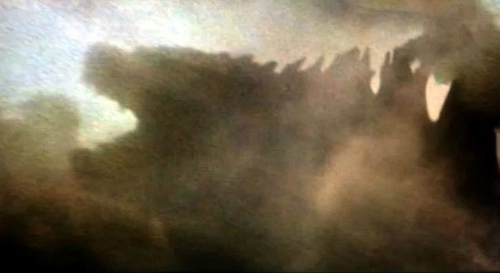

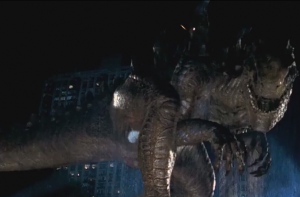
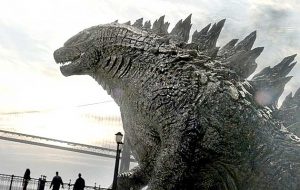
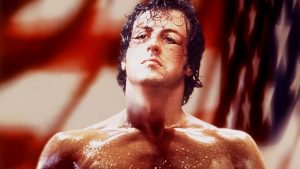
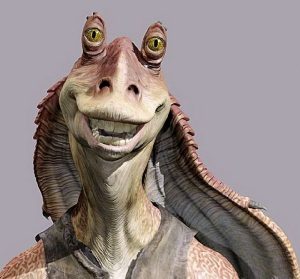

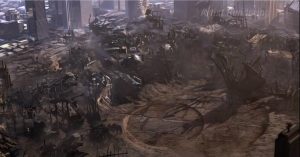










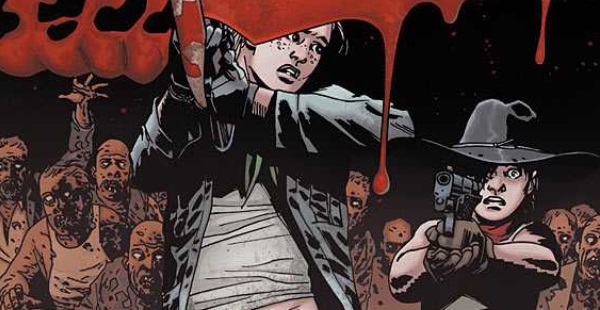


good points. all very valid. but, at its core, it’s a monster movie. my inner eight-year-old was happy enough with the final product.
Can’t wait to see this one.
I liked it too, Jeff, and I had a lot of fun watching it. That being said, I also like to analyze everything I see and pick it apart.
Awesome article…and I have zero interest in Godzilla. Well done!
Not bad but something that must be corrected, something I’ve seen in a lot of places:
This is NOT a remake. It’s a sequel to the 1954 movie, which is referenced in this movie. So, this is neither a remake or a reboot. It’s a sequel.
Also, the whole thing about G not getting a lot of screen time (again, I’ve seen this in a lot of places as well) is nothing new. In the first Godzilla movie he wasn’t seen until 20 minutes in and that was only for a minute if that and you barely see the monster until the third act. To me this was a very smart thing to do. It’s like the 1975 classic Jaws. Had the shark been seen more the impact of the film would not have lasted nearly 40 years. In my opinion, as a HUGE Godzilla fan (I’ve seen the movie twice already and currently own 24 of the 28, now 29, Godzilla movies), he got just enough screen time. Not to much and not to little. I also liked the fake outs on the fights because it made the big fight at the end more impactful.
And while I’ve never seen Godzilla as a hero even though he was cast as the hero from 1964’s Ghidrah, the Three-Headed Monster through 1975’s Terror of MechGodzilla I’ve always seen him as a force of nature, like a hurricane. You know he’s coming, you know things will be destroyed but you can’t do anything but stand aside and wait for the storm to pass and pick up after. Though the media in the movie proclaimed him a savior that doesn’t change the fact he was little more than a big dog defending his yard for no other reason than there was something in his yard that didn’t belong.
Anyway, that’s my two-cents worth other than this is the only must-see movie I had on my list this year!!
There was one thing they REALLY got right in this movie: The hero characters didn’t walk around acting like there was no real danger and cracking stupid jokes every five minutes. One of my biggest issues with movies these days, especially the comic book movies, is the characters are always cracking jokes and not treating the threat seriously. If they don’t treat it seriously then why should I? This is especially annoying in the Marvel Avengers movies. Thor isn’t a wiseass and Iron Man isn’t that annoying.
This movie get massive points for not mocking Godzilla and the Mutos but for treating them like valid threats.